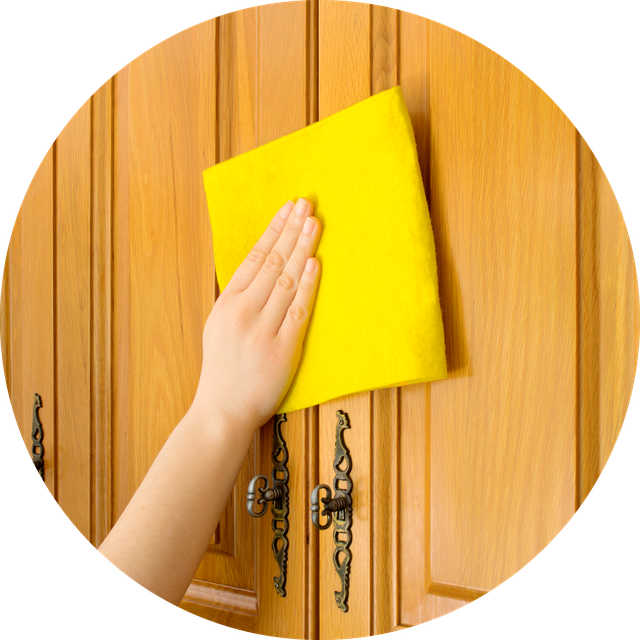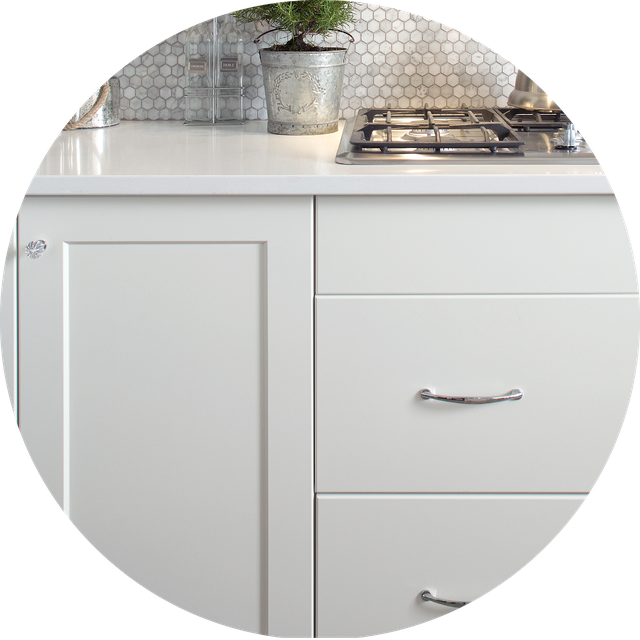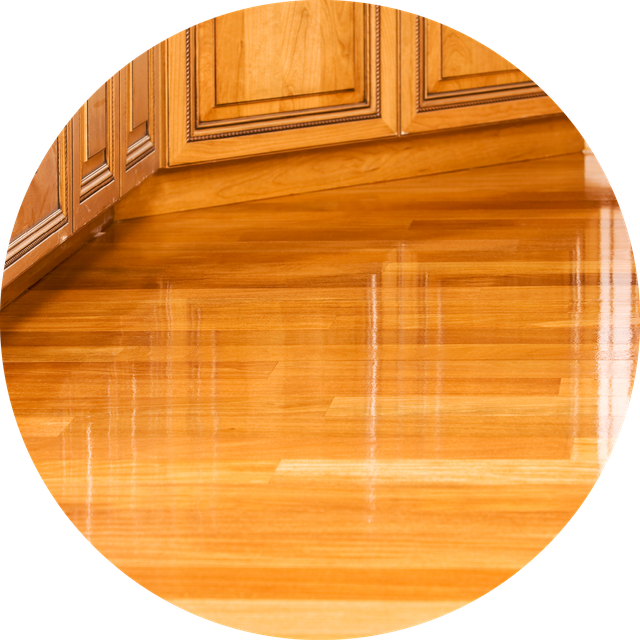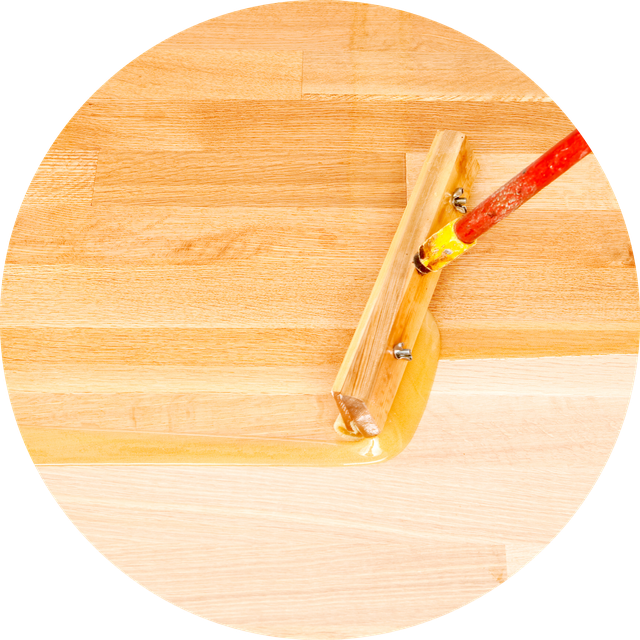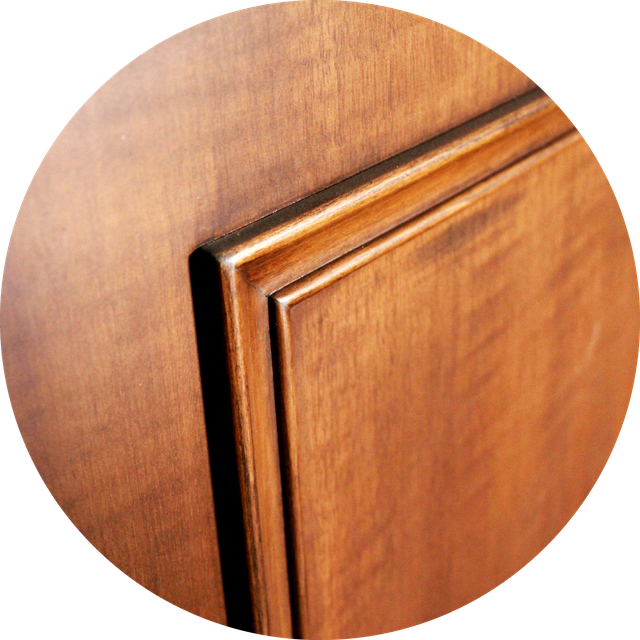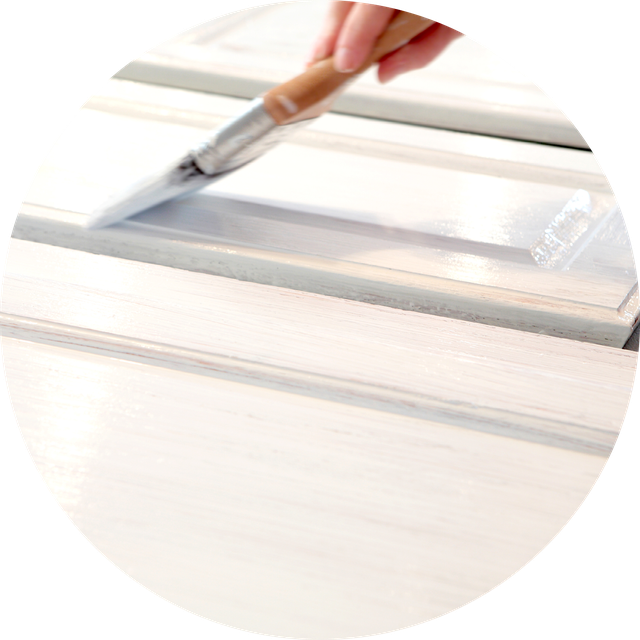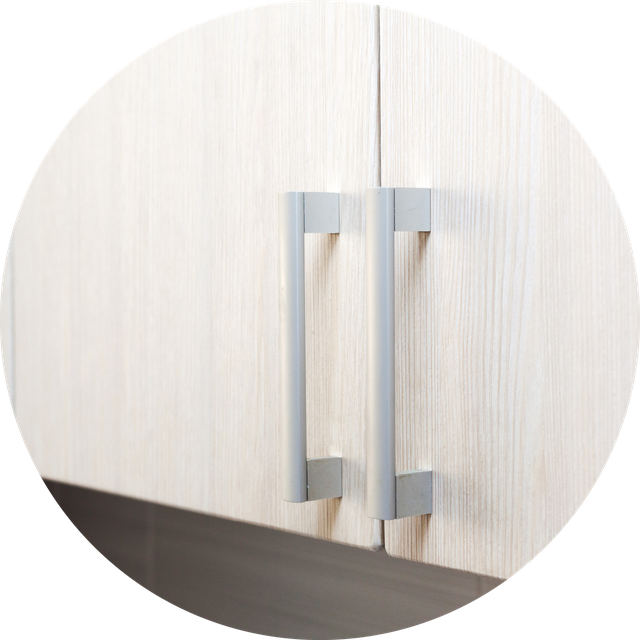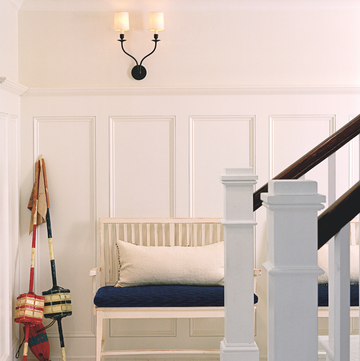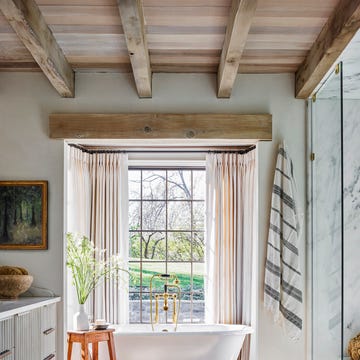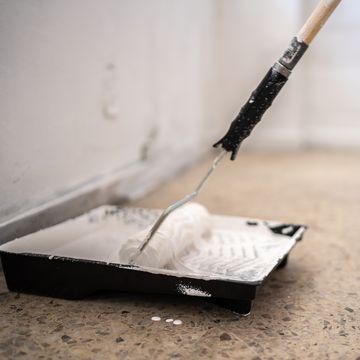If the kitchen is a culinary theater, then the cabinets are the stagehands. They contain the spices, tools, and cookware that’s required to carry out the show. But after a grueling schedule of back-to-back performances that can last for years, it’s no wonder that well-worn kitchen cabinets can look ready for their final bow.
But before you send your chipped, broken, or outdated cabinets into retirement, remember that there’s always one last route to take before a curtain call: refinishing.
“A quality refinishing job will keep your kitchen cabinets in good condition and extend the life of their finish,” says Hunter Macfarlane, Lowe’s Project Expert.
While this project is best performed by a professional, Macfarlane notes that experienced DIYers can take it on with the proper tools, an adequate timeline, and enough research. So to get this show on the road, we asked Macfarlane for his advice on how to refinish kitchen cabinets in five key steps. And with his advice, your cabinets will be looking as good as new.
What to Know If You're Working on Your Own
If you consider yourself to be someone who can take on an advanced home project like refinishing kitchen cabinets, then the first thing you need to be aware of is how much time you'll be committing to getting it done. Macfarlane estimates that refinishing kitchen cabinets can take anywhere from four to eight weekends, or between 60 and 130 hours. This time frame depends on the size of your kitchen, and it may need to be adjusted depending on the extent of the work. Also keep in mind that your kitchen may not be functional as you complete this undertaking, too.
“It’s a very tedious and time-consuming project, which can often lead to frustration and failure if done incorrectly,” he says. “That’s why I highly recommend consulting with someone who specializes in refinishing projects.”
That being said, if you’d like to manage this on your own, remember to follow the manufacturing instructions of chemicals, and to protect yourself and your kitchen as you work. And if you need help along the way, it’s never too late to call in a professional.
How to Refinish Kitchen Cabinets
Step 1: Clean the surfaces.
Before you do any refinishing, Macfarlane recommends starting this project by thoroughly scrubbing your kitchen cabinetry. To do this, carefully remove the cabinetry from the walls, clean them off, and give the wood time to dry completely.
“It’s a good idea to label or number the cabinet doors so you'll put them back in the right place,” he notes. “If you're sanding or painting, be sure not to sand off or paint over the marks. The holes for the hinges need to match too, so you can easily determine which door goes where.”
Step 2: Protect yourself and the rest of the kitchen.
Spread drop cloths on the countertops, and use them to cover the appliances and floors, too. Don’t forget to wear gloves and eye protection when you’re using a wood cleaner.
Step 3: Soak the hardware.
Since the hardware is likely also in need of a good cleaning, place them in a large basin with soapy water for 30 minutes, Macfarlane advises. “You can scrub them lightly with a soft brush before rinsing,” he says. Once they’re clean, allow the hardware to dry completely. Then, apply a polish and let the pieces dry again.
Step 4: Strip and refinish your cabinets.
Now it’s time to strip your cabinets—and this is where the process can get tricky. First, make sure that your workspace is in a well-ventilated area, and preferably outside.
In order to determine which stripping agent is best for your cabinetry, you’ll need to figure out what type of finish is already on the wood. If you think that the cabinetry has a wax finish, for instance, then Macfarlane says that you’ll have to put a few drops of turpentine on the wood. If the solution dissolves, you’re correct. Other possibilities include shellac, lacquer, paint, vinyl, polyurethane, varnish, penetrating oil, or a water-based finish, and each have their own specifications for proper removal or care.
The Right Solution to Strip Your Cabinets, Depending on Their Finish:
Determine the proper plan of action for your cabinetry, and then apply the right stripping agent to the wood. Start with an inconspicuous corner to be sure that it works, and wear the right protective materials as you work.
Step 5: Sand, prime, and paint the wood.
Once you’re finished with the stripping agent, use a wood filler to repair any holes or scratches in the wood, and then lightly sand out the patch once it dries. The rest of the cabinetry should also be sanded, and as previously mentioned, that’s why it’s best to do this work outdoors. Finally, paint the cabinetry in a fresh coat of paint, noting too that cold or hot temperatures may cause the wood to expand. Roll on another layer if you notice that the weather has exposed unfinished wood.
“It's also a good idea to use paste wax on cabinets that you finished using penetrating oils,” Macfarlane adds. “The wax will give additional protection while complementing the appearance of this finish.”
After the paint has dried, carefully reinstall the cabinetry and its hinges in your kitchen. It’s a lot of work to complete this project on your own, so if you do, use this moment to appreciate a well-deserved round of applause.
Follow House Beautiful on Instagram.

